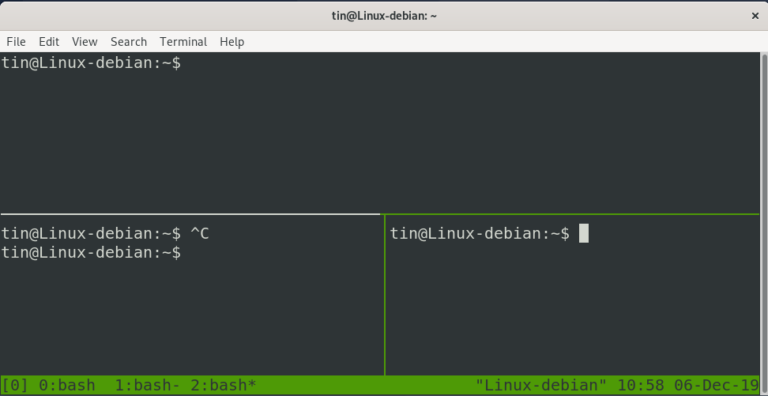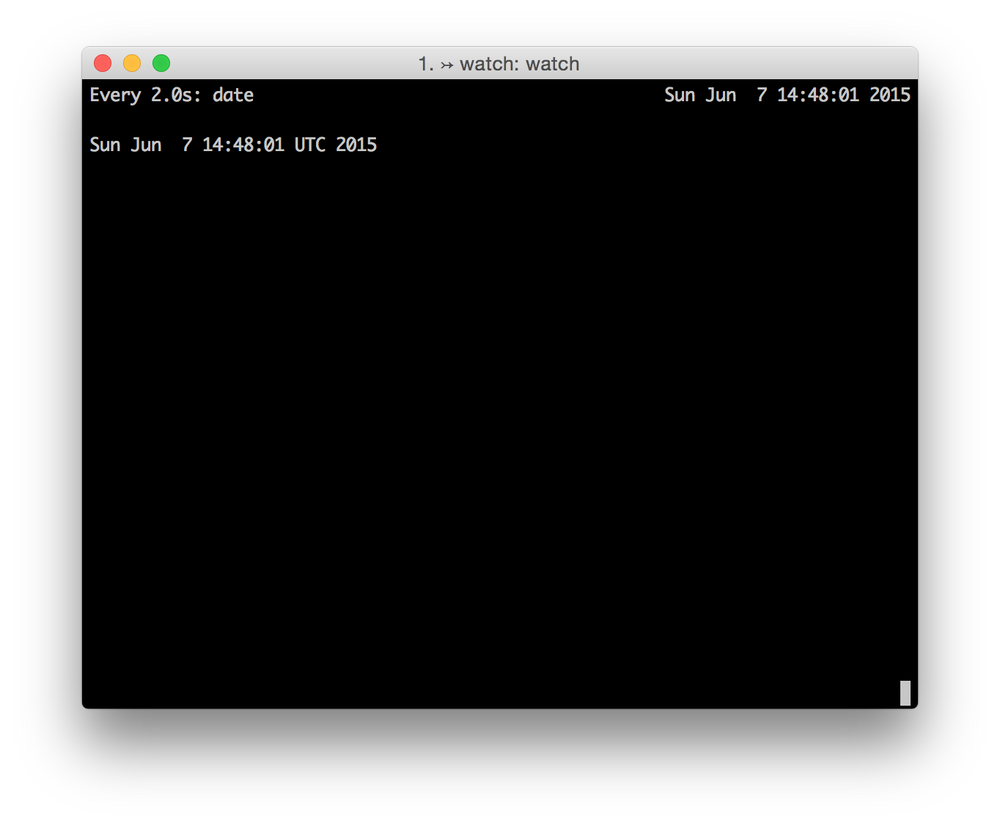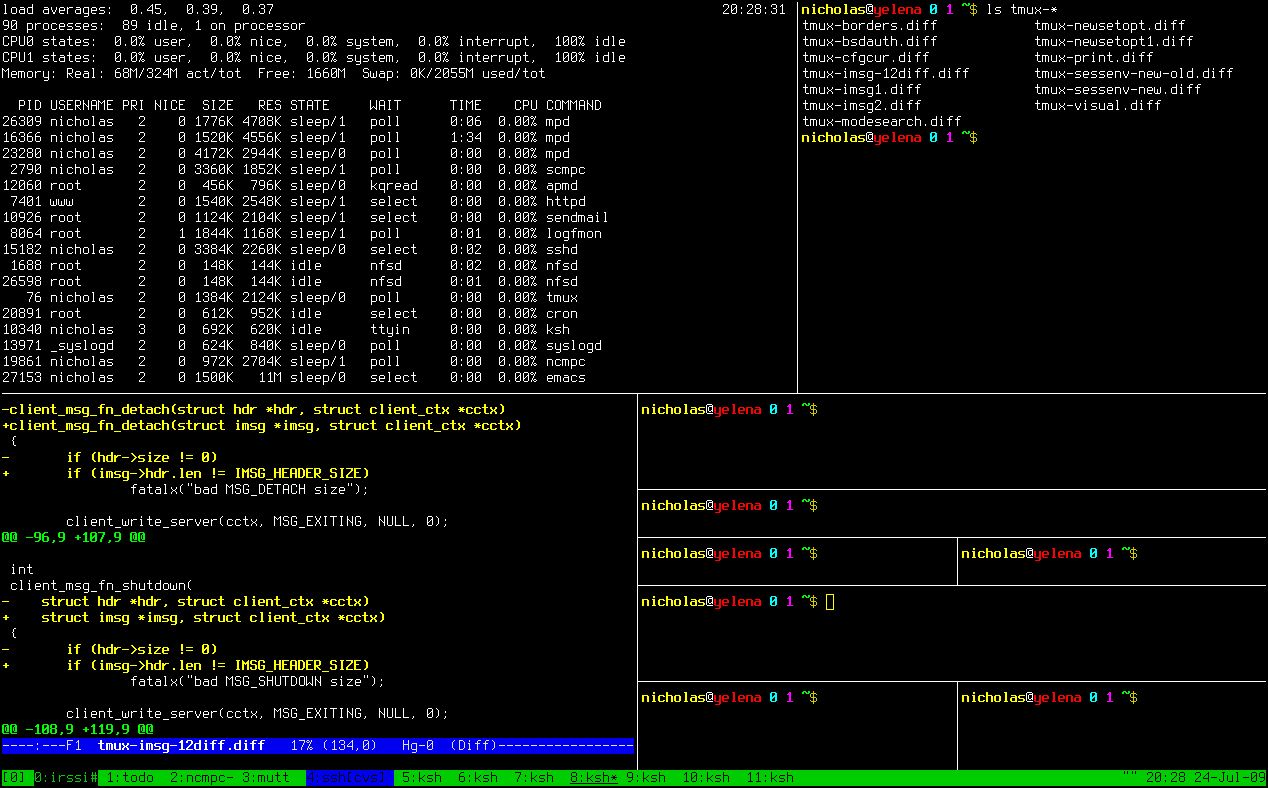
TMUX VS ITERM2 WINDOWS
I think this is an idiosyncratic approach, but I've found tmux much more approachable by simply cutting windows entirely out of the equation and focusing on sessions + panes. terminal application: iTerm2 3.5.0beta10 shell: zsh 5. But windows can disappear without a trace - it's hard to know how many windows you have open in a session, and it's hard to see what's going on with your windows all at once. Panes are obviously helpful for viewing things side-by-side. My reasoning is: you can name a session (prefix-$), and you can easily list sessions (prefix-s), so it's easy to know where you are with them. However, I don't see the point of windows in tmux, and have never once used them. Each server to which I periodically connect is running another few sessions. tmux may be detached from a screen and continue running in the background, then later reattached. What is tmux It enables a number of terminals to be created, accessed, and controlled from a single screen.


Currently, customizations can only be done via editing a JSON settings file, but a GUI settings page is currently being developed. Within Windows Terminal, you can customize the color scheme and such just like in iTerm2 on MacOS. iTerm 2 is one of the best terminal emulators for any platform, and the window split functionality is only part of that. Finally, using both is always a good pick. iTerm2 brings the terminal into the modern age with features you never knew you always wanted. The Windows Terminal, just like iTerm2, is only a terminal application for the shell of your choice. Even if you're not using any of tmux's window split functionality, that advantage alone is worth learning the basics of it.
TMUX VS ITERM2 CODE
I've usually got 4-8 named sessions (which correspond to code repos typically), each with three or so panes, running on my main machine. It works on Macs with macOS 10.12 or newer. It seems to only open the new session in. So I changed the first line (tmux new-session -s dev -n main -d) to tmux -CC new -t dev, but then although the session starts in a new window, it does not have the split and the resize. For other languages, you need to specify a font that works with your language as the Non-ASCII font. This starts a new session but the window is on the window I execute the script, not the new, separate window in iTerm2. I use tmux sessions + panes all the time. If you only use English or western european languages, you probably only need to set the font for ASCII characters. There's a strong argument to be made for using the same tool across all local + remote machines - it's much faster under the hands.

I've been using tmux for maybe 1/2 a year now (after years of reading hype), and can say that it's definitely replaced terminal tabs for me.


 0 kommentar(er)
0 kommentar(er)
